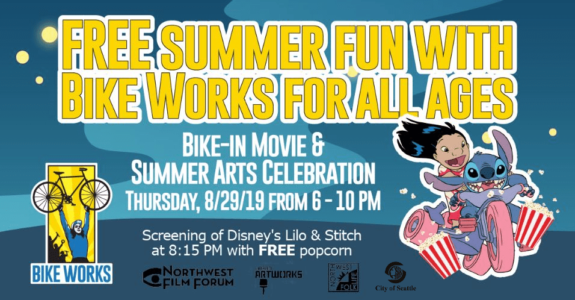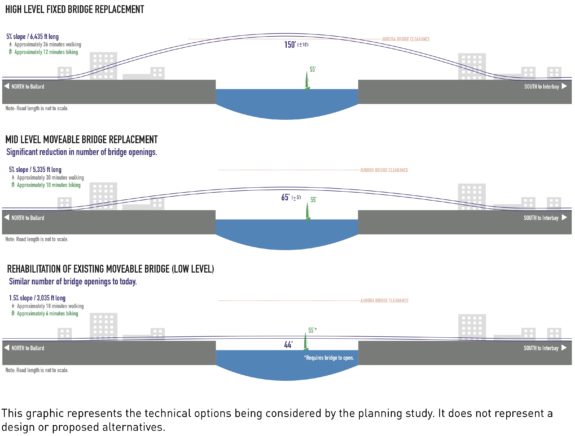 Hey, you! Bike to Pratt Park (20th/Yesler) tonight to watch Lilo & Stitch with Bike Works. Because free bike-in movies are awesome, and our city is awesome, and public music and art is awesome, and Bike Works is awesome, and what else were you gonna do?
Hey, you! Bike to Pratt Park (20th/Yesler) tonight to watch Lilo & Stitch with Bike Works. Because free bike-in movies are awesome, and our city is awesome, and public music and art is awesome, and Bike Works is awesome, and what else were you gonna do?
There music and public art starting at 6, and the movie starts at 8:15.
Join Bike Works, NW Film Forum, Urban Artworks, and NW Folklife for our BIKE-IN MOVIE NIGHT in Pratt Park! Bring a blanket, snacks, and friends of all ages for this free summer event.
This year, through our partnership with Urban Artworks, we’ll have an interactive arts and mural activity for youth to participate in, as well as performances from a diverse group of musicians from Northwest Folklife before the film. We’re also screening 2 shorts featuring bicycles from Northwest Film Forum’s Children’s Festival before the feature film.
Music & public art start at 6 PM, the movie starts at 8:15 PM.
Performances from:We’ll be screening Disney’s Lilo & Stitch about a young girl who adopts an ugly ‘dog’ who turns out to be an alien. They embark together on a raucous adventure via trike & surfboard around the Hawaiian islands.RSVP on Facebook: https://www.facebook.com/events/231977897479019/










